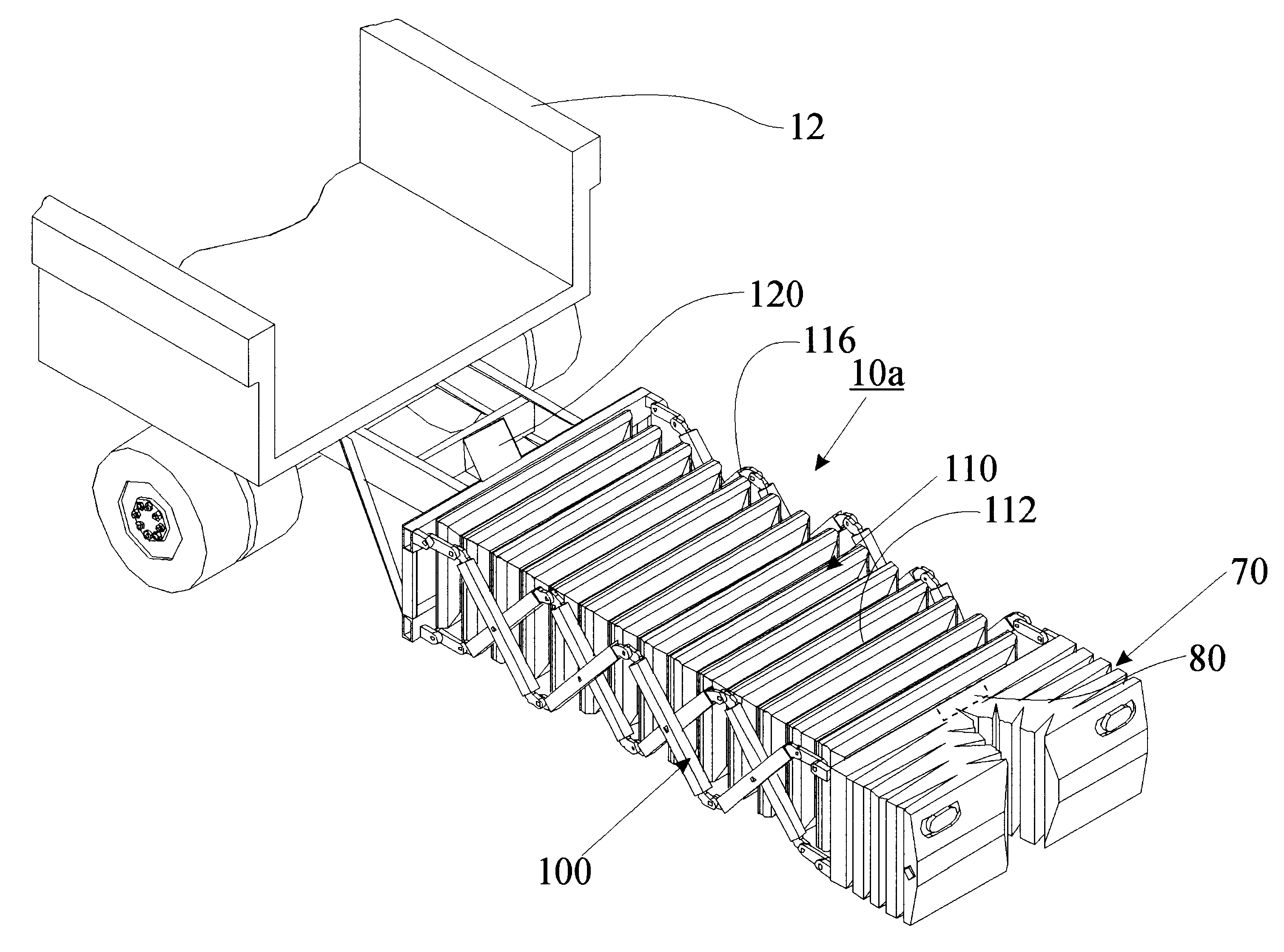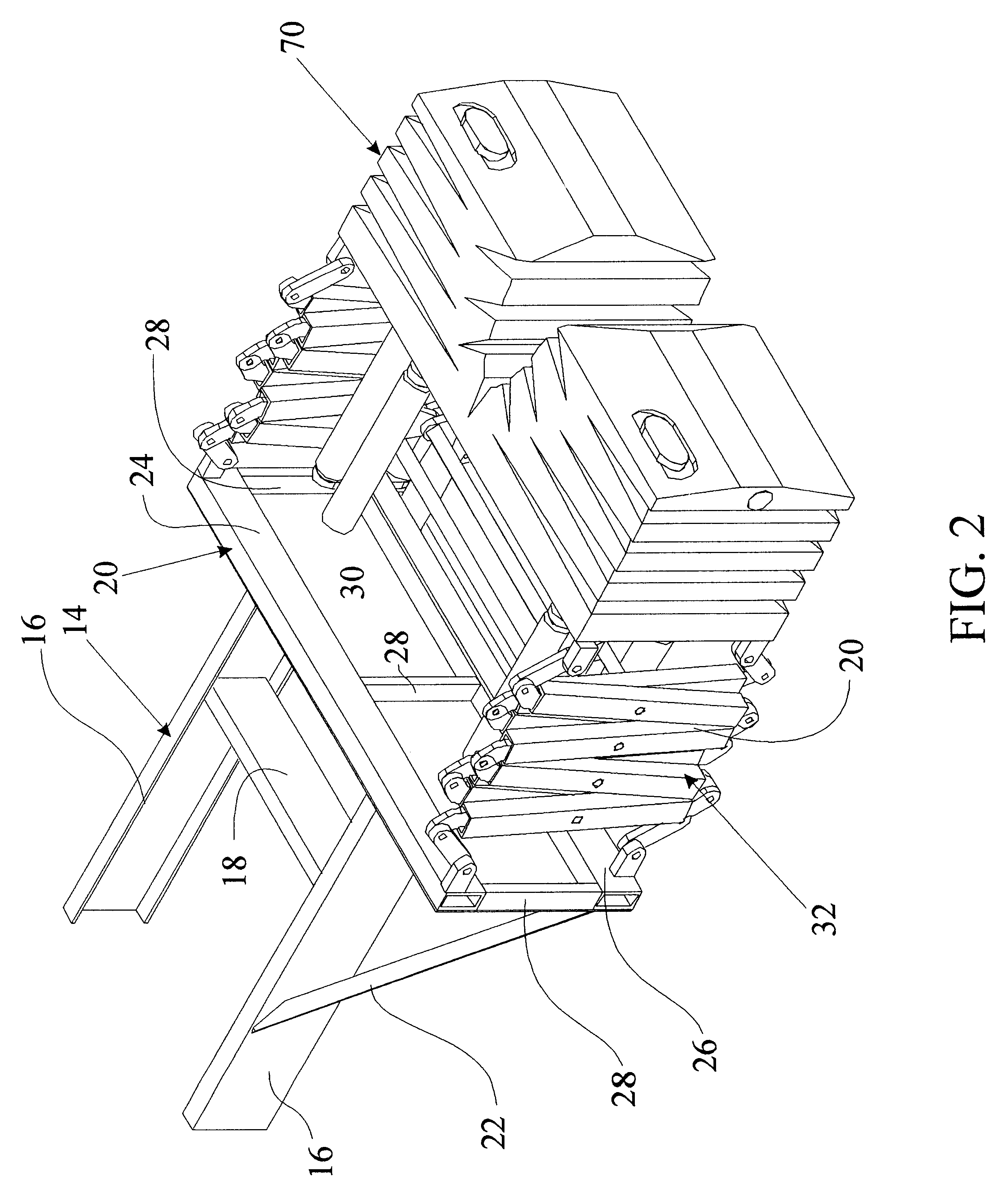Damped crash attenuator
a technology of shock absorber and damper, which is applied in the direction of shock absorbers, elastic dampers, ways, etc., can solve the problems of increasing the severity of the crash, system not adapting, and potential injury to the construction crew and the vehicle occupants, so as to reduce the energy dissipation force, reduce the energy absorption, and reduce the effect of the crash severity
- Summary
- Abstract
- Description
- Claims
- Application Information
AI Technical Summary
Benefits of technology
Problems solved by technology
Method used
Image
Examples
Embodiment Construction
With the input W.sub.T =16000 lbs, W=4400 lbs, A=24 square feet (3feet by 8 feet), L=10 feet, x.sub.0 =62 mph, .mu.=0.7, p.sub.a =14.7 psia, T.sub.a =68 F., C.sub.D =0.6, .gamma.=1.4, R=1716.5 fps.sup.2 / R,
P.sub.1 =17.94 psia Equation (9)
X.sub.1 =1.33 feet Equation (10)
x.sub.1 =61.6 mph Equation (11)
x.sub.2 -x.sub.T2 =4.41 feet Equation (15)
p.sub.2 =33.2 psia Equation (13)
x.sub.2 -x.sub.T2 =54.6 mph Equation (14)
T.sub.2 =206 F. Equation (17)
A.sub.o,max =4.37 square feet Equation (20)
X.sub.T =8.9 feet Equation (21)
PUM
 Login to View More
Login to View More Abstract
Description
Claims
Application Information
 Login to View More
Login to View More - R&D
- Intellectual Property
- Life Sciences
- Materials
- Tech Scout
- Unparalleled Data Quality
- Higher Quality Content
- 60% Fewer Hallucinations
Browse by: Latest US Patents, China's latest patents, Technical Efficacy Thesaurus, Application Domain, Technology Topic, Popular Technical Reports.
© 2025 PatSnap. All rights reserved.Legal|Privacy policy|Modern Slavery Act Transparency Statement|Sitemap|About US| Contact US: help@patsnap.com



